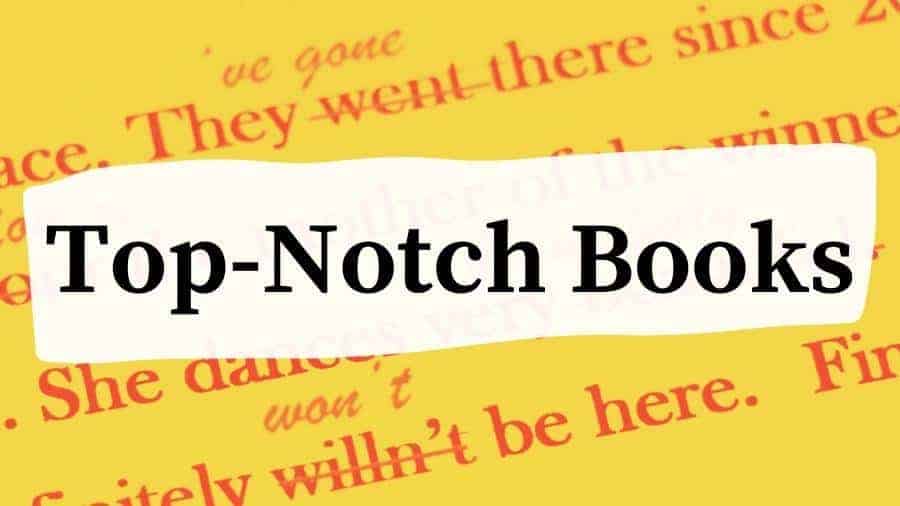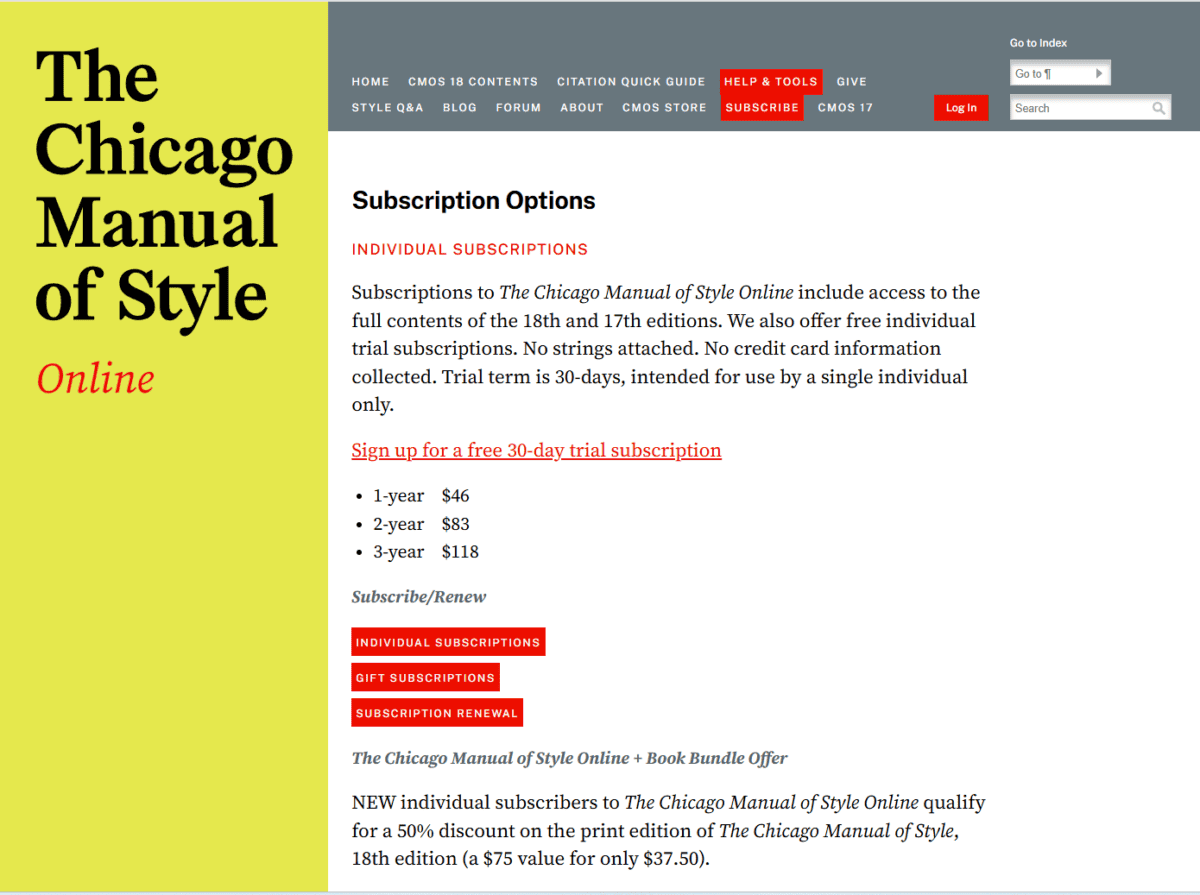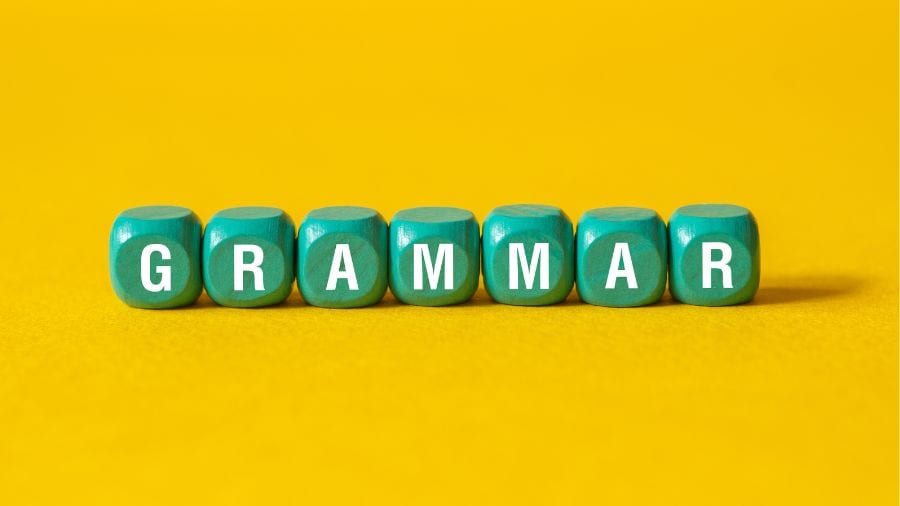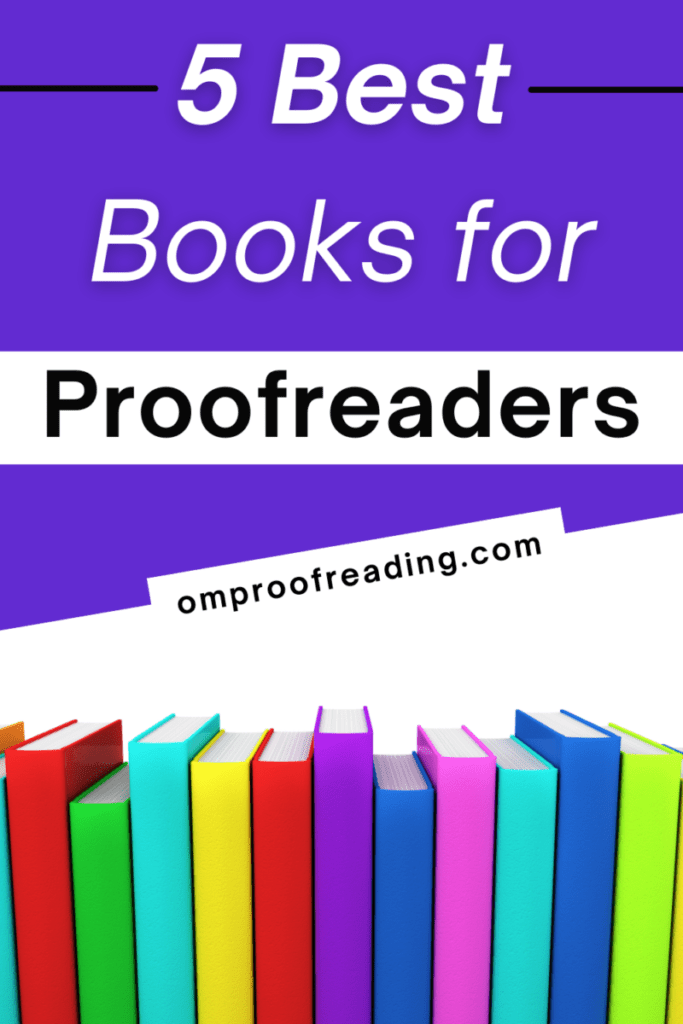This article may contain affiliate links. Please see our affiliate disclaimer in the footer menu for more information. Thank you for your support!

Proofreaders use reference books to do their work since it would be impossible to memorize all the rules in several style guides and hundreds of thousands of dictionary entries.
Let’s discuss five indispensable reference books for proofreaders.
The Best Reference Books for Proofreaders
I recommend the following five books for proofreading and learning about English grammar and mechanics.
1) The Chicago Manual of Style, 18th Edition (CMOS)
If you’re going to work as a general proofreader, this is a must-have book.
About the Book
CMOS is the most comprehensive style guide available and the gold standard for the US book publishing industry. It’s the go-to resource for proofreaders, editors, and writers of fiction and nonfiction books.
The first edition came out in 1906. It’s an oldie but a goodie! 😊
I started using this book when I took the General Proofreading: Theory and Practice™ course offered by Proofread Anywhere. At that time, CMOS was in its 17th edition. (The 18th edition was first available on Amazon in late September 2024.)
About the Publisher: The University of Chicago Press was founded in 1890 and is the university press of the University of Chicago.
Organization of Content
CMOS is divided into three parts:
- Part I: The Publishing Process
- Part II: Style and Usage
- Part III: Source Citations and Indexes
I spend most of my time referring to Part II when proofreading.
Part II covers grammar, syntax, word usage, punctuation, spelling, and capitalization. It also discusses how to treat numbers, abbreviations, foreign languages, mathematics, quotations, and dialogue.
CMOS is the style guide I follow to produce the content on Om Proofreading.
Deciding whether to use the book, the online version, or both is a matter of preference.
How to Get the Most Out of It
It’s a thick book, so I recommend putting sticky flags at the beginning of each chapter in Part II for quick reference. I wrote a symbol on each flag to remind me what each chapter is about.
I also found it helpful to jot notes in the book’s margins for future reference.
In addition to the comprehensive index, the outlines for each chapter are invaluable for finding what you need.
Top-Notch Tip: It weighs over two pounds, so you can use it as a doorstop or paperweight if needed! 😉
You can purchase a hard copy of The Chicago Manual of Style, 18th Edition, on Amazon.
How to Get the Most from the Online Version

Take advantage of the user’s forum. Subscribers (many of whom do proofreading or editing) share information and ideas on the forum.
If you prefer to use CMOS online instead of (or in addition to) owning the book, you can see the current price here.
The Chicago Manual of Style Online offers individual users a free 30-day trial subscription.
2) Merriam-Webster’s Collegiate Dictionary, 11th Edition
Major style guides typically tell users which dictionary to follow.
CMOS suggests Merriam-Webster’s:
“A good dictionary is essential to a manuscript editor. Chicago recommends Webster’s Third New International Dictionary and the latest edition of its chief abridgment, Merriam-Webster’s Collegiate Dictionary; both are revised and updated online under the imprint of Merriam-Webster.”
– The Chicago Manual of Style, 17th Edition
About the Book
This dictionary defines the current vocabulary of American English.
It covers new terms and meanings across a broad range of fields.
About the Publisher: Merriam-Webster, Inc., founded in 1831, is an esteemed American publisher of language-related reference books. It’s best known for its outstanding dictionaries.
Organization of Content
It contains 225,000+ definitions and more than 42,000 usage examples.
Some newly added words include clickbait, takeaway, and binge-watch (source).
How to Get the Most Out of It
It weighs three pounds, so my advice is to develop strong arms.😉
Honestly, I’ve never used a hard copy of this dictionary. I think the online version is your best bet unless you want something tangible.
You can find words and their meanings so much faster online.
But you can purchase a hard copy of this dictionary on Amazon if you prefer.
How to Get the Most from the Online Version

Use the example sentences to better understand how a word is used.
Online, you can use the Merriam-Webster dictionary for free or pay for a subscription to Merriam-Webster Unabridged.
The unabridged version is ad-free and includes over 250,000 words that are unavailable in the free version. You can opt for a 7-day free trial to see if you like it.
3) The Best Punctuation Book, Period
This book is an excellent reference to use in conjunction with specific style guides (discussed below).
About the Book
This book lives up to its name by making punctuation easy to understand and covering punctuation rules across four major style guides.
The author even put together a “Punctuation Panel” of professional copy editors to cover gray areas not addressed in the major style guides.
About the Author: June Casagrande is a grammar columnist and copy editor for the Los Angeles Times. She has experience as a proofreader and has taught copyediting for UC San Diego Extension. She’s also the author of several books related to grammar, syntax, and usage.
Organization of Content
This book is divided into two parts:
- Part I: Guidelines
- Part II: Punctuation A to Z
Part I discusses numerous punctuation marks and their treatment according to each style guide. Casagrande provides a name for each style to aid readability:
- “book style” (follows The Chicago Manual of Style)
- “news style” (follows The Associated Press Stylebook)
- “science style” (follows the Publication Manual of the American Psychological Association)
- “academic style” (follows the MLA [Modern Language Association] Handbook)
She also assigns a letter to each of these four names (b,n,s,a) and uses the letters throughout the book to indicate the correct treatment whenever punctuation rules vary by style.
Clear explanations followed by relevant examples make this book easy to follow—despite dealing with so many details.
The second part of her book is an 82-page alphabetized list that tells you how to punctuate frequently used words according to style.
How to Get the Most Out of It
Put a sticky flag on page 75. It contains a chart called “Quotation Marks vs. Italics for Titles of Works” that you’ll likely refer to often.
The “works” include book series, book chapters, record albums, blogs, individual blog posts, etc.
You may also want to flag the chapters on commas, hyphens, and apostrophes since these tend to be the most challenging punctuation marks for proofreaders to master.
You can buy The Best Punctuation Book, Period on Amazon.
4) Painless Grammar

This book is an engaging refresher on grammar and punctuation that can help you brush up on the basics. I read it before enrolling in a proofreading course.
About the Book
The author says Painless Grammar is “a book for kids who want to learn to write well without atrophying their brains from boredom.” By “kids,” she’s referring to the middle and high school students for whom she wrote the book.
However, my sister was required to read this book for a writing class she took in graduate school!
It’s a delightful read that’s infused with the author’s playful sense of humor. It contains straightforward real-life examples to illustrate points. Although it doesn’t always follow the rules in CMOS, it comes close.
Even though this book was written for middle and high schoolers, I didn’t find it overly simple. Instead, I found it incredibly helpful!
About the Author: Rebecca Elliott holds a PhD in clinical psychology from the University of North Carolina at Chapel Hill. She’s passionate about horticulture and has been a columnist for several gardening magazines.
Organization of Content
Painless Grammar is divided into seven chapters that cover parts of speech, sentence structure, punctuation, agreement (e.g., between subjects and verbs), word usage, editing, and good writing.
The first five chapters are full of “brain ticklers” (answers are included) where you have to identify and correct the errors in sentences.
It’s great proofreading practice!
How to Get the Most Out of It
I recommend reading every well-written and witty word. Also, don’t skip the “brain ticklers” throughout the book to check your understanding.
I also took extensive notes on this book the old-school way—with pen and paper.
You can buy Painless Grammar on Amazon.
5) The Blue Book of Grammar and Punctuation
This book covers basic grammar and punctuation rules and can be used to assess your knowledge in these areas.
About the Book
The Blue Book is a well-organized guide with crystal-clear rules and loads of examples to reinforce them.
To write this book, the authors consulted some of the best reference books on American grammar and punctuation (including CMOS).
Whenever the reference books differ on how to treat a particular element, the book gives choices depending on the purpose of the writing—noting that consistency is essential.
About the Author: Jane Straus was a best-selling author, esteemed educator, inspiring life coach, and sought-after speaker. While preparing for a job teaching English to adults, she couldn’t find any resources that explained English rules clearly. Her dilemma provided the impetus to create this fantastic guide.
Lester Kaufman and Tom Stern also helped author this book.
Organization of Content
The first five chapters provide instruction on grammar, punctuation, capitalization, writing numbers, and confusing words and homonyms.
The last two chapters contain 44 quizzes, 4 tests, and answers to all the tests and quizzes.
How to Get the Most Out of It

Begin by looking at the tests and quizzes in chapter six to determine when you’d like to take them. They apply to the material you’ll learn in chapters one through five.
You may want to take the relevant quiz right after you finish each section of a chapter. Alternatively, it may be more helpful to take all the quizzes pertaining to a chapter after you’ve read the entire chapter.
You can also take advantage of the website that Straus created to accompany her guide: GrammarBook.com.
I think this website is one of the best sites for practicing English grammar.
The site covers all the rules and examples from the book. It also provides over 70 free quizzes and 4 free tests.
Although the quizzes in the book overlap with those on the website, the book quizzes are a bit more comprehensive.
Quick Comparison: The Blue Book offers more practice to solidify your knowledge, but Painless Grammar provides more detailed explanations of concepts and rules.
You can purchase The Blue Book of Grammar and Punctuation on Amazon.
Additional Books You May Need as a Proofreader

Below are links to the latest editions of three other major style guides and to the style guide indicated for proofreading and editing British English.
If you’re familiar with one or more of these guides, you can accept a wider variety of proofreading jobs.
Unlike the other books in this article, I don’t own the following four style guides. However, I trust them because they’re the most widely used guides for their specific purpose.
- The Associated Press Stylebook (for journalism)
- MLA (Modern Language Association) Handbook (for the humanities)
- Publication Manual of the American Psychological Association (for social sciences)
- New Hart’s Rules: The Oxford Style Guide (for UK English)
Two Excellent Books for Copy Editors
Since many proofreaders become interested in copyediting, I want to recommend two books on this topic:
- The Copyeditor’s Handbook (written by Amy Einsohn and Marilyn Schwartz)
- The Copyeditor’s Workbook (written by Erika Bűky, Marilyn Schwartz, and Amy Einsohn)
The Copyeditor’s Handbook is comprehensive and arguably the best resource for copy editors.
The Copyeditor’s Workbook is the companion to the handbook and offers extensive copyediting practice.
I bought the two books together since I wanted the workbook. When I bought them, getting them as a set was cheaper.
However, since prices fluctuate, I’d encourage you to compare these options to get the best deal.
I highly recommend this pair of books to anyone interested in becoming a copy editor.
Before we get answers to a couple of common questions, I want to leave you with a witty quote that applies to copyediting.
“So the writer who breeds more words than he needs, is making a chore for the reader who reads.”
– Dr. Seuss
Frequently Asked Questions
What training do I need to become a proofreader?
To become a proofreader, you need to receive formal training. You can take one of several reputable online proofreading courses that will teach you everything you need to know to proofread professionally. Proper training enables you to compete in the market and helps build your confidence.
Topics you’ll learn about include the following:
- style guides
- proofreading software
- client communication
- the kinds of errors to correct
- how much to intervene in a document
- where proofreading fits into the editorial process
- considerations for proofreading various types of texts
How do I get a job proofreading books?
After receiving proper training, you can find work proofreading books by offering services on freelance marketplaces, looking for opportunities on job boards, networking with writers and other proofreaders, and getting listed in the directory of your national editorial society.
Om Proofreading talks about finding remote book proofreading gigs if you’d like to learn more.
I hope this article has given you useful information about the best reference books for proofreaders.
Best wishes to you!
“Today is your opportunity to build the tomorrow you want.”
– Ken Poirot

